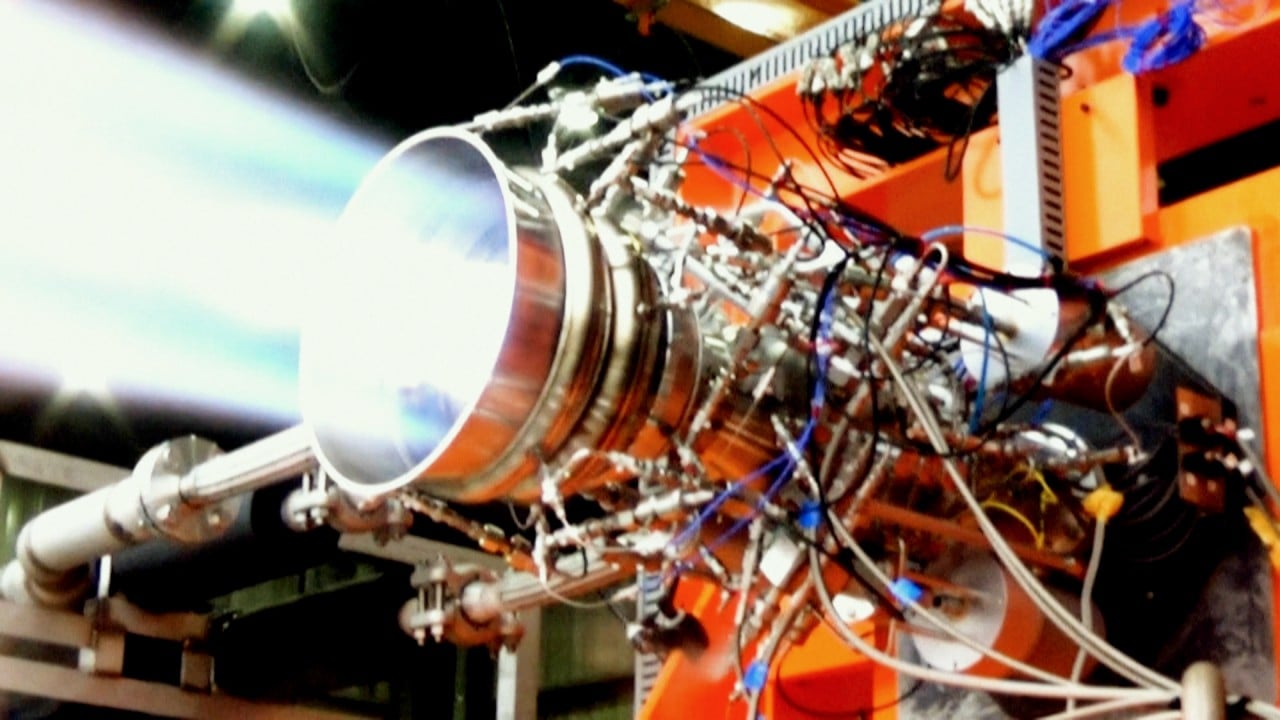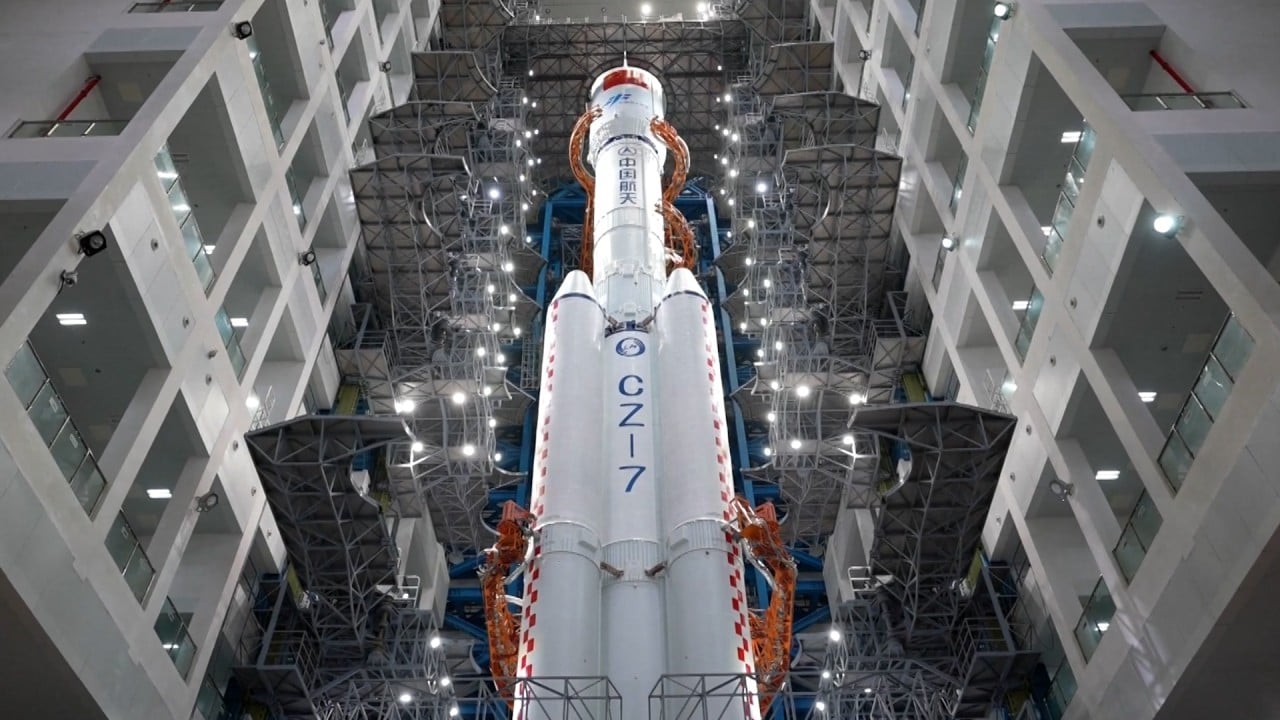
China plans to build a giant rail gun to launch hypersonic planes into space, making Nasa’s dream come true
- Chinese scientists are combining electromagnetic launch and hypersonic flight to create a new way to send people into space
- If the project is successful, the new technology could reduce launch costs to a fraction of the current price
This space plane, a behemoth weighing 50 tonnes and measuring longer than a Boeing 737, is part of the “Tengyun project” unveiled in 2016.
Relying on the plane’s own power for lift-off would require a huge amount of fuel. And to ensure safety during a low-speed take-off, scientists and engineers have had to make compromises in aerodynamic design and engine layout that affect high-speed flight efficiency.
But, while in the past such projects did not get past the discussion phase, this time it is different. China is putting words into action.
And scientists working on the project are confident the various issues can be solved.
“Electromagnetic launch technology provides a promising solution to overcome these challenges and has emerged as a strategic frontier technology being pursued by the world’s leading nations,” the team, led by scientist Li Shaowei with the magnetoelectric general department of China Aerospace Science and Industry Corporation’s (CASIC) Flight Vehicle Technology Research Institute, wrote in a peer-reviewed paper published in the Chinese academic journal Acta Aeronautica on February 6.
Putting theory to the test
This facility can propel a heavy object to speeds approaching 1,000km/h (620mph)– close to the speed of sound. In the coming years, the length of the test line will be extended to achieve a maximum operating speed of 5,000km/h.
Meanwhile in Jinan, capital of the eastern Shandong province, another giant maglev track to support ultra high-speed electromagnetic sled experiments is also up and running, under the supervision of the Chinese Academy of Sciences (CAS).
China’s new hypersonic drone beats F-22 in aerodynamic efficiency: study
Nasa’s failure to launch
China is not the first country to propose an electromagnetic space launch system. Such concepts have been floating around since the Cold War era.
In the 1990s, Nasa tried to bring this idea from paper to reality, with the first step being the construction of a mini test line measuring 15 metres (49 feet).
Due to significant setbacks in electromagnetic launch technology, the US military has abandoned the development of some related projects, such as rail guns, and shifted the saved funding to hypersonic missiles.
Now, China has picked up the relay baton handed off by America. Nonetheless, Li and his colleagues are being cautious.
Computer simulations, wind tunnel tests
In the early stages of their research, they uncovered a startling omission by Nasa: no wind tunnel tests were ever conducted to ascertain the viability of detaching the space plane from its track.
Nasa’s original idea was that accelerating the space shuttle to just 700km/h would be enough to eliminate the need for a first-stage rocket, but Chinese scientists believe this speed is too low.
However as the speed increases, the airflow between the aircraft, the electromagnetic sled carrying it and the ground track becomes very intense and complex. So one of the first things the project team must confirm is that the aircraft will be able to safely separate from the track.
To this end, Li’s team has conducted extensive computer simulations and wind tunnel tests. Their findings have revealed that as the aircraft breaches the sound barrier, numerous shock waves ripple along its underside, colliding with the ground and generating a cascade of reflections.
These shock waves introduce airflow disruptions, carving out pockets of subsonic airflow amid the aircraft, electromagnetic sled and track.
Does China need a data bureau to support its ever-growing satellite networks?
When the sled then hits its target speed, releases the aircraft and brakes abruptly, the chaotic airflow initially buoys the craft, only to transition into a downward thrust after four seconds, according to the wind tunnel test result.
If there were passengers on board, they might experience brief dizziness or weightlessness. But as the distance between the aircraft and the track increases, the intensity of the airflow diminishes until disappearing completely. Accompanied by the roar of the engine, the aircraft then enters a rapid climb phase.
Certain sections of the craft require reinforcement to withstand the reflected shock waves. Further real-world tests are also needed. But overall, this approach is safe and feasible, Li’s team wrote in the paper.
China’s advantages in rail gun research
In the realm of electromagnetic space launch systems, China is ahead of the game, with some clear advantages that other nations lack.
China’s robust manufacturing sector can also supply the world’s finest and most cost-effective rare earth permanent magnets or superconducting wires for high-speed maglev tracks. Numerous cities, eager to build high-speed maglev trains, are ready to invest.
While SpaceX’s reusable rockets have slashed satellite launch costs to US$3,000/kg, some scientists have estimated that an electromagnetic space launch system could drive those costs down to a mere US$60/kg.



